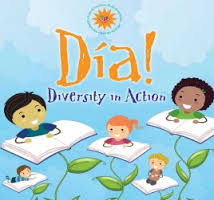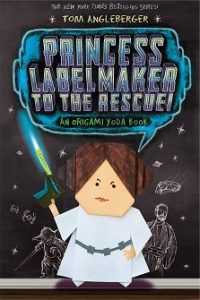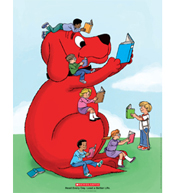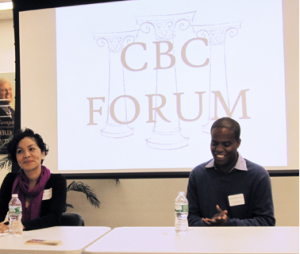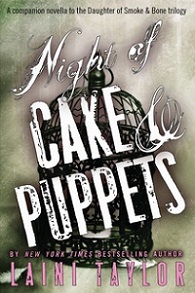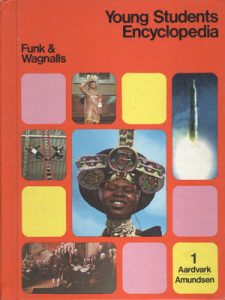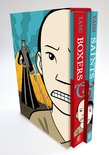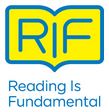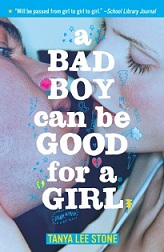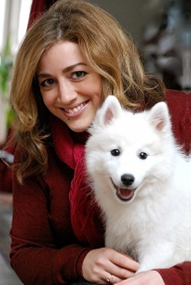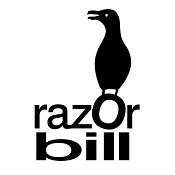Blog
-
Librarians: Apply for an ALSC Día Family Book Club Mini-Grant!
Via ALSC: “Apply for a Día Family Book Club mini-grant! Intended as an expansion of El día de los niños/El día de los libros (Día), the Día Family Book Club …
-
New Study Finds that Language Gap Between Rich and Poor Children Begins Earlier Than Previously Thought
“The new findings, although based on a small sample, reinforced the earlier research showing that because professional parents speak so much more to their children, the children hear 30 million …
-
Tom Angleberger to Create Book 5 in the ‘Origami Yoda’ Series
“The ‘Star Wars’-inspired series stars Dwight, McQuarrie Middle School’s weirdest student, and his Jedi-wise finger puppet of Star Wars Grand Master Yoda. Antics continue in the series with the introduction …
-
Scholastic, HandsOn Network Announce Winners of Fifth Annual Clifford the Big Red Dog® BE BIG™ in Your Community Contest
New York, NY— Scholastic Media, a division of Scholastic Inc., the global children’s publishing, education and media company, and HandsOn Network, the volunteer activation division of Points of Light and largest volunteer …
-
Macmillan Makes Entire Ebook Backlist Available to Libraries
“’We are excited patrons will now have access to even more of Macmillan’s ebook catalog to borrow and enjoy,’ said George Coe, the President of Baker & Taylor’s Library & …
-
#1 New York Times Bestselling Author Chris Colfer Builds on Success of Land of Stories Series with a New Three-Book Deal at Little, Brown Books for Young Readers
NEW YORK–On the heels of the international success of his Land of Stories series, #1 New York Times bestselling author and award-winning actor Chris Colfer will publish two new books in the …
-
CBC Forum: New Markets, New Opportunities
“Moderator Carol Fitzgerald of the Book Report Network asked audience members to ‘dismiss your preconceived notions about marketing and selling books,’ before asking the panelists to comment on effective methods …
-
Laini Taylor to Release a ‘Daughter of Smoke & Bone’ Novella
The story follows two characters, Zuzana and Mik, as they embark on their first date. The final installment of the Daughter of Smoke & Bone trilogy, ‘Dreams of Gods & …
-
Neil Gaiman on the Future of Reading and Libraries
The Reading Agency lecture was founded “as a platform for leading writers and thinkers to share original, challenging ideas about reading and libraries as we explore how to create a …
-
CBC Diversity: Industry Q&A with Author-Illustrator Don Tate
When you were a child or young adult, what book first opened your eyes to the diversity of the world?
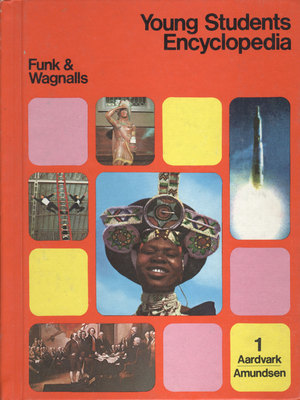
I didn’t read books as much as I should have. I struggled with comprehension and retention. There was plenty of Dr. Seuss and Mother Goose around the house, but I preferred our Funk & Wagnalls Young Students Encyclopedias. That’s where I discovered a multicultural world.
As a child, I thought the world was white. That’s what my world looked like growing up in Des Moines, Iowa in the 1960s and 70s. White people, white books, white movies, white television, white music. Encyclopedias allowed me to see the world from another vantage point. They revealed a world made up of color — brown people of every shade. Maybe that’s why encyclopedias appealed to me so much.
What is your favorite diverse book that you read recently?
I’m a little confused about the term ‘diverse book.’ It’s one of those uncomfortable, elephant-in-the-room terms, that used to mean one thing, but has morphed into something entirely different. It’s an industry code word whose definition still evolves.
I’ve illustrated children’s books for nearly 30 years — trade and educational. When I entered the business back in the 80s, people used the word ‘diversity’ interchangeably with Black or African-American. When someone said ‘diversity,’ I knew they were talking about me. I was often hired to illustrate a text because an editor had a ‘diverse,’ ‘multicultural,’ ‘African-American’ manuscript. However when I hear the term used today, it’s more inclusive, as should be. When someone says ‘diverse,’ they could mean African-American, Hispanic, Asian, Native, LGBT, girls/women, mixed-race, physically challenged, Buddhist — or even white. A better question might be: What is a favorite book that exemplifies diversity? But even that would be a difficult question because I don’t think diversity can be about one or two books. It’s about a body of books: Heart & Soul; Diego Riveria; Dreaming Up!; Around our Way on Neighbor’s Day; Alvin Ho; Jingle Dancer. There’s so many.
If you could participate in a story time with any children’s book author or illustrator (alive or dead) who would it be?
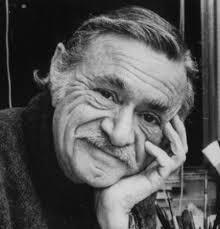
Ezra Jack Keats. It’s funny, but until just a few years ago, I thought Ezra Jack Keats was a Black man —- ha-ha-ha! — but, honestly, I did. He had a way of portraying African-American people authentically. And he did it with soul! In order for a white artist to illustrate Black people, they need to understand our skin color, hair texture, anatomy, or the art will pop off the page as unauthentic. Or at least it will to other Black people. Ezra portrayed Black characters with dignity and pride (though some early critics said otherwise). Interestingly, he did it at a time in history when Black people weren’t portrayed much in children’s literature at all. Ezra’s stories did not focus on the character’s race, racial strife, slavery, civil rights. He told stories with universal themes that every child could relate to. The color of his character’s skin faded as one got into the story. I don’t know that anyone has been able to do that since then.
How do you introduce books featuring characters of color to parents and kids?
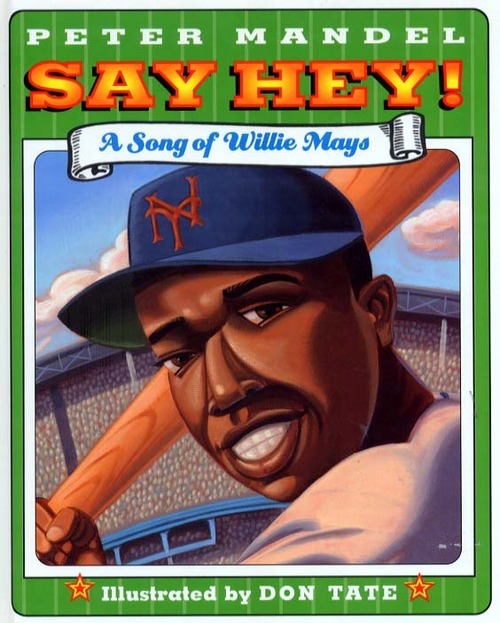
I introduce my books to kids by visiting schools and participating in book festivals. I don’t make an issue of race. I tell stories. I draw pictures. I talk about my books. My brown-face characters speak for themselves. Children, regardless of race, are open to my books. Parents, however, can hesitate sometimes. For example, one time at a book event, a white child strolled up and picked up one of my books. He was with his parents, who looked a bit uncomfortable with the situation. He turned to his mother and said, “I want this one,” pointing to my Willie Mays book. His mother smiled in attempt to hide a struggle going on inside her head. But soon her feelings were plastered all over her face: She did not want to buy my book for her kid. After a few seconds of hem-hawing, she responded, “What about one of those books?” She pointed to another author who was signing nearby. Then she pointed to another. Those authors were white. I don’t remember the authors or their books, but they didn’t feature Black characters. To my amusement, the kid did not give up. “I want this book,” he said. I fought off a smile. This has happened more than a few times. I think the more kids— and parents of all races — are exposed to racial diversity in books, the less race becomes an issue.
Authenticity is, of course, key in multicultural literature, and often times reviewers tend to highlight perceived inaccuracies. How do you think this affects the publishing industry’s decision-making process in including or excluding characters and books with diverse and/or multicultural themes?
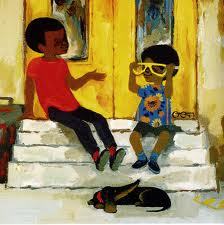
It’s been my experience as a picture book illustrator, that when an editor has a book with African-American subject matter, written by a white author, they’ll bring on a black artist, if possible. They do this, I’ve been told many times, figuring a Black artist will bring a greater sense of authenticity to the story. I agree and disagree. As a Black artist, I know my people, culture, life experience. I can make it real. But so can an artist of another race, if they do their research like they should — Ezra Jack Keats, again, a good example.
The practice of matching a Black author to a manuscript with Black subject matter creates a niche for Black artists. Filling that niche keeps manuscripts coming our way, as long as the artwork is quality and deadlines are met. On the flip side, it can also put us into a box. I love illustrating books about my people. I am thankful to the editors and art directors who provide me work. But where are the offers to illustrate a manuscript with a white protagonist? Will that come along? Or what about a manuscript featuring a cute dog, funny pig, or crazed-out carrot? I can do a crazed-out carrot.
How can we reconcile the prevalence in reviews of readers wanting to like or sympathize with the protagonist, and our call to write people with whom they fundamentally differ?
I don’t know if the publishing industry can reconcile with readers (white readers?) who are less interested in books with protagonists who differ from them. It’s a free country, you can’t force ‘em to read what they don’t want to read. But I think if you can reach their children, you can affect the future.
When children are raised with books featuring multicultural characters, protagonist who are different from them are no big deal. As a Black male, I didn’t very often have the choice between a protagonist who looked or didn’t look like me. If I was going to read a book, it would likely feature a white protagonist. Period, like it or not. So today I can read a book like The Marbury Lens and not get tripped up on the race of the character.
As someone who reads, loves, and often reviews children’s literature, please provide what you feel are the three most important things to keep in mind when writing a diverse character or about a different culture.
Be wary of stereotypes. Check your work by checking with others. I belong to several writing critique groups. I’m the only person of color within those groups. When my friends write about other races, I’m careful to point out stereotypes or things that might be offensive to people of color. My friends aren’t racists in the least bit, but they’re human. They have preferences and biases, same as I do. But they’ve probably never been the victim of racism, and so they just don’t know when the line has been crossed.
The question of stereotyping can be fine line to walk, in my opinion. Lets say a white author writes a story about a Black teen, who lives in an urban neighborhood and likes to play basketball, is raised by a single mother, whose father is dead or in prison. Is this stereotypical? Yes, kinda. But is it realistic? Oh, yes! Should a white author avoid this kind of imagery for fear of being called out on stereotyping? No, I don’t think so. But I advise that they check themselves by checking with Black people. And if they don’t know any Black people, well, there’s where the problem will begin.
If more books were published like Varian Johnson’s My Life As A Rhombus, books featuring suburban, Black math-whiz teenagers, in homes with two caring and hardworking parents, the other stuff wouldn’t likely be an issue anyway. Balance is what’s needed.
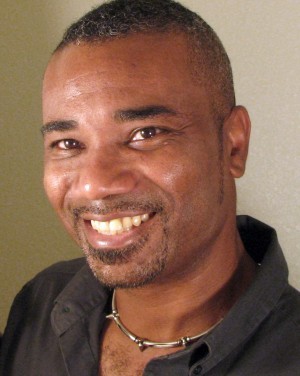
Don Tate has illustrated many books for children, including She Loved Baseball, Ron’s Big Mission, Duke Ellington’s Nutcracker Suite. He is also the debut author of the award-winning It Jes’ Happened: When Bill Traylor Started To Draw. Don lives in Austin, Texas.
-
2013 National Book Award Finalists Revealed
2013 Young People’s Literature Finalists Kathi Appelt, The True Blue Scouts of Sugar Man Swamp Atheneum Books for Young Readers/Simon & Schuster Cynthia Kadohata, The Thing About Luck Atheneum Books for Young …
-
FableVision Studios and Reading Is Fundamental Present Free Reading Apps for Kids at Boston Book Festival
BOSTON – FableVision, a Boston-based group of education media development and publishing companies, and Reading Is Fundamental (RIF), the nation’s largest children’s literacy nonprofit, have teamed up to develop and distribute …
-
Currituck County School Board Votes to Keep Challenged Library Book on Shelves
The Kids’ Right to Read Project (KRRP) is celebrating a 4-1 vote by the Currituck County School Board that will keep Tanya Lee Stone’s A Bad Boy Can Be Good for …
-
Boston Celtics and Houghton Mifflin Harcourt Launch Partnership with a Day of Volunteerism at Ellis Elementary School in Roxbury
BOSTON – The Boston Celtics and Houghton Mifflin Harcourt (HMH) teamed up with the Ellis Elementary School in Roxbury this week for a day of service and community engagement. The …
-
Scholastic, Mars Institute and Seti Institute Take Flight with the Launch of New Nonfiction Book ‘Mission: Mars’
NEW YORK – In celebration of World Space Week, whose theme this year is Mars exploration, Scholastic, the global children’s publishing, education and media company, announces the North American release of …
-
Scholastic Acquires World English Rights to Middle Grade Fantasy Adventure Series by Award-Winning Author Inbali Iserles at Frankfurt Book Fair
Frankfurt, Germany – Scholastic, the global children’s publishing, education and media company, has acquired at auction world English language rights to a three book middle grade fantasy adventure series by …
-
Penguin Young Readers Group to Launch First Serialized Digital Publication with Jessa Holbrook’s ‘While You’re Away’
Razorbill, an imprint of Penguin Young Readers Group, has tapped Teen Vogue to help launch the six installments of Jessa Holbrook’s YA novel WHILE YOU’RE AWAY. The first part of the serialized digital …
-
New, Free Scholastic Book Fairs App Helps Parents Find the Right Children’s Book in a Snap
New York, NY – According to recent research, parents are a key source of books for their kids, but many parents struggle to find the perfect book that matches their child’s …
-
‘Wonder’, the #1 ‘New York Times’ Bestselling Middle-Grade Novel, Reaches 1 Million Copies Sold in North America
FOR IMMEDIATE RELEASE WONDER, THE #1 NEW YORK TIMES BESTSELLING MIDDLE-GRADE NOVEL, REACHES 1 MILLION COPIES SOLD IN NORTH AMERICA The Book that Sparked a National Movement Reaches 1 Million …
-
Abrams Appleseed Acquires Caldecott Winner Chris Raschka’s Thingy Things Series; Four New Titles to Publish Alongside Four Revised Editions Starting in Spring 2014
NEW YORK, NY – Abrams Appleseed, an imprint of ABRAMS, announces the acquisition of eight books in the Thingy Things series by two-time Caldecott winner Chris Raschka. Published in a …

